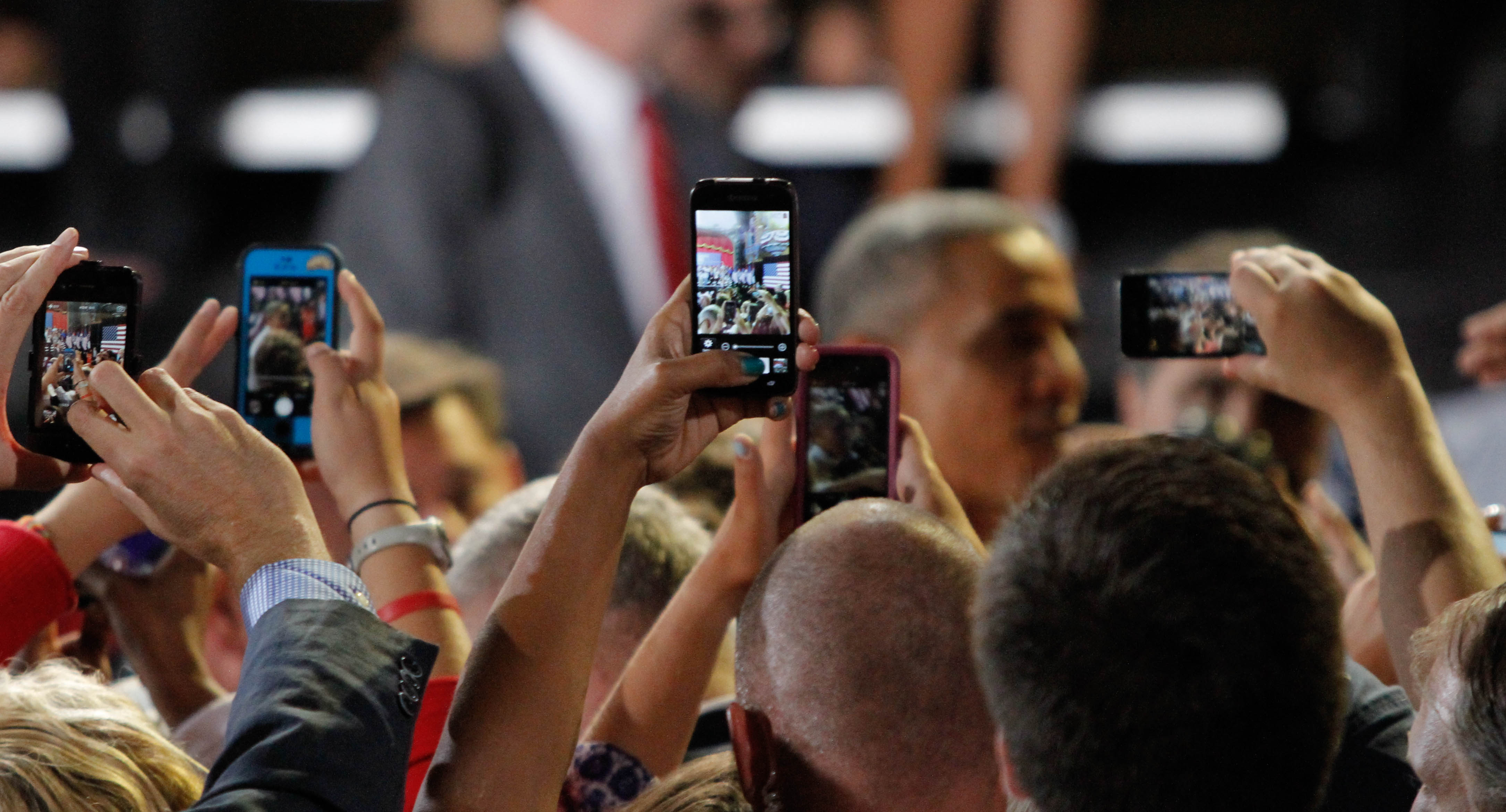Adopting a digital-first mindset at the University Daily Kansan
Katie Kutsko is the editor-in-chief of the student newspaper at the University of Kansas at Lawrence. She recently shared some thoughts on Medium about how she would restructure the student newsroom and reposition the paper for the digital age. We are reposting them here on Storybench. From training staff to file directly into the C.M.S. to looking at BuzzFeed for inspiration to engaging with alumni of the Daily Kansan, Kutsko has some interesting ideas that other college journalists, not to mention professional newspaper staff, could learn from.
This fall the entire Kansan staff will have to confront something new in its 110-year history — turning our focus away from a daily print product. I am about to embark on round two of an Editor-in-Chief-ship at the Kansan.
Here’s my plan:
- Initiate a culture shift
- Strengthen reporting and coverage
- Align news and business efforts
- Engage with alumni
Since the Fall 2013 semester, editors and advisers have been preparing the staff and its stakeholders for the burden of the print product to be lifted. The Kansan’s print product will only print twice per week, beginning in August.
The University Daily Kansan’s Board of Directors initially hired me as the Spring 2014 editor, and I have been on the team for a few years now. I’ll be back again during the Fall 2015 semester for round two as Editor-in-Chief and I couldn’t be more thrilled and ready to begin.
Since 2013, we’ve developed new staff structures and new production processes, emphasized the importance of multimedia storytelling elements and digital strategy, and we’ve tried to integrate this all while covering breaking news. In the past year, the Kansan has been there to cover a university overdraft error that resulted in $45,000 extra from a student-fee-funded account, a botched student senate election, a masked man who made veiled threats to students, sexual assault on campus, and President Obama’s visit. Through it all, we have been there to keep the University community informed.
I’m proud to say that I was a part of important coverage, and I’m proud of my counterparts who also led during important times. I believe the staff stepped up, but we can — need — to do more.
My goals for the fall semester are to initiate a culture shift, strengthen reporting and coverage, align news and business efforts, and engage the Kansan’s alumni.
To reach these goals, the Kansan will need strong leadership. Emma LeGault and I have agreed to lead the Fall 2015 Kansan news staff together. LeGault will assume the role of Managing Editor. Our experiences balance one another out, allowing me to spearhead big-picture ideas, manage relations with the business side and oversee other overhauls. LeGault will maintain the day-to-day news operation by ensuring that the content is of the highest quality and that section editors are challenging their reporters.
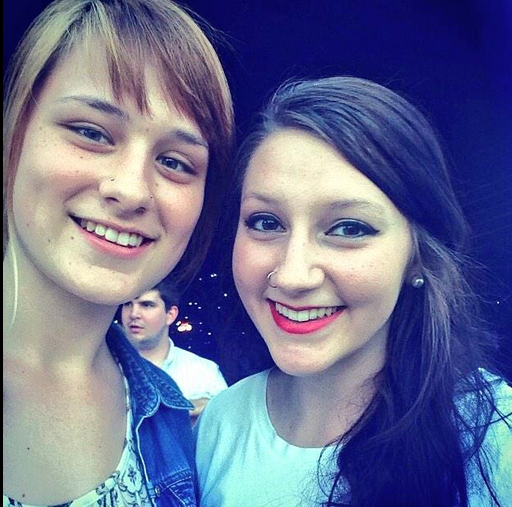
My first step tackles the newsroom’s culture from top to bottom. By December the Kansan must sustain a digital-first atmosphere in a way that it never has before. This requires us to create a culture of development and learning among reporters, designers, photographers and editors. The newsroom must be an open space where the entire staff feels comfortable — from an entertainment correspondent to the managing editor. I will encourage collaboration between sections, and I will open dialogue between the staff so we can all learn from each other.
As LeGault has said to me before, “We need people to stop saying, ‘what do I have to do today?’ and starting saying, ‘what could I do today?’ ”
It is my hope that these changes will help the Kansan achieve a Newspaper Pacemaker and an Online Pacemaker [awards from the Associated Collegiate Press]. We’re one of the best student media organizations, so let’s prove it. This also means putting journalists in a greater position to win multimedia Hearst and Pinnacle Awards.
LeGault’s responsibility is to strengthen overall news content. To do this, she will instill watchdog habits and push editors beyond what they expect of themselves in terms of content development and leadership skills.
As a staff, our goal will be to focus on you, our audience — we need to know, listen and engage with them.
Culture shift
As it stands, the Kansan has still not fully adopted a “digital-first” mindset. Before, only a few web editors dipped their hands in our social media and content management system. Going forward it will be a team effort.
We must replace the current staff structure and production schedule. Since I’ve been a part of the Kansan staff, the daily production schedule has gone as follows: The Editor-in-Chief, advisers, business staff and Patty Cromwell are in the office during normal business hours, between 9 a.m. to 5 p.m. Maybe a few dedicated section editors will be there during the day, but most — including the rest of the production staff — show up around 3 p.m. for the daily budget meeting. The staff stays until it ships the paper around midnight. Generally, reporters and photographers don’t make it into the newsroom more than once per week for a section meeting — if the editor that semester chooses to hold staff meetings in the newsroom.
This is not a feasible or realistic model anymore. We must rethink who is in the newsroom and when. Instead of all news production occurring between 3 p.m. and midnight, we need to shift to daytime hours. Editors and reporters will be in the newsroom 9 a.m. to 5 p.m. with shifts during the evenings to supplement. Here’s what I have in mind:
NEW DAILY PRODUCTION SCHEDULE
9 A.M. EIC and ME arrive to discuss previous day and look ahead to coming day. Look over digital content (print product on Mondays and Thursdays). Discuss pertinent business.
9:30 A.M. Morning budget meeting.
At least one representative from each section meets in the newsroom for coffee to discuss what’s happening on campus that day, prepare digital editors
Either the Engagement Manager or the Digital Operations Manager will take notes during the meeting and send out key notes to the staff. I see the key notes as: which stories are especially good for social, which stories should be promoted on the homepage, which events of the day to promote on personal social media accounts, which stories have opportunities for extra digital assets, etc. It will be a digital “to-do” list for the day.
Meeting should last 10–15 minutes to keep the meetings brief and ensure that I am considering that everyone’s time is precious (M-F)
10 A.M. Newsroom shifts begin. Each person will work four hours at a time, and we will break the shifts up between section editors, digital editors, reporters, designers, photographers and copy editors. During the day shifts, reporters will be available for breaking/spot news, build out content based on advice from the Engagement Manager and Digital Operations Manager, develop stories discussed during budgets, etc. Copy editors will package and optimize content for Kansan.com by copy editing, writing headlines and summaries for desktop and mobile, posting articles and photo galleries, packaging content, adding relevant links to stories, tweeting timely stories and more as directed by the Engagement Manager or Digital Operations Manager. J550 reporting students will be expected to work shifts in the Kansan newsroom, too, and will cover breaking and spot news, build out content based on advice from our News Editor, Engagement Manager and Digital Operations Manager and further develop stories discussed during the class periods. The digital editors will constantly review analytics and give assignments to those in the newsroom. This is the shift breakdown:
10 a.m. — 2 p.m.
2 — 6 p.m.
6 — 10 p.m.
Print editing shifts on Sundays will look like this:
4 — 8 p.m.
8 p.m. — midnight
3 P.M. Afternoon budget meeting.
At least one representative from each section meets in the newsroom to discuss what happened on campus that day and what’s on the docket for the evening, prepare digital editors
Meeting should last 10–15 minutes (M, T, Th)
Meeting should last 30 minutes (S, W, F) in place of the “weekly budget meeting”
On Sunday and Wednesday evenings, the Digital Operations Manager will help the Editor-in-Chief, Managing Editor and section editors determine the print product’s budget based on traffic metrics, news judgment, trending topics, and targeted audiences. This digital metrics expert will understand our audience the best and will translate that knowledge to all editorial products.
Each section editor will sign up to be the “night editor” once per week. This person will be in charge of the operation during the evening shifts during non-print production nights (M, T, Th, F). Upper management will always be on-call. The “day editor” will hand the baton off to the “night editor” around 4 p.m. The ME will manage print production nights (Su, W).
NEW STAFF STRUCTURE
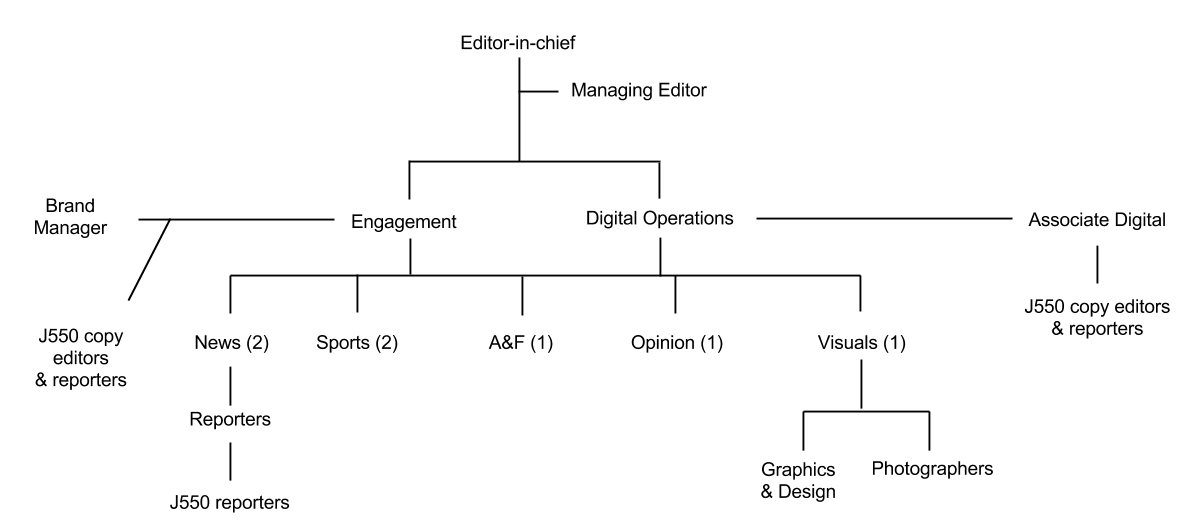
[Job descriptions for new digital positions.]
I see the Digital Operations Manager working with the J550 copy editing class to assign copy to edit and articles to optimize for Kansan.com. The Engagement Editor will also work with the J550 copy editing class to assign aggregation posts or write social media posts.
These two editors will also work with the J550 reporting class, which will work in shifts as well. The editors can assign breaking news, in tandem with the News Editor. They can assign aggregation or other digitally-focused content.
Here are my other plans to shift the culture at the Kansan, outside of restructuring the staff and schedule:
- Our reporters and editors currently file stories into Google Docs, where they’re edited. [inlinetweet prefix=”” tweeter=”” suffix=”says @katiekutsko”]We’re going to file directly into the CMS now[/inlinetweet]. LeGault, the digital editors and I will train the entire staff in the CMS and show them how to do the jobs that have been the responsibility of one person in the past. This will include training the J550 copy editing and reporting students as well.
- Reporters and editors will be in the newsroom throughout the day. Section editors can work with them throughout the process of writing stories, instead of waiting until the end of the writing process. Reporters and editors can bounce ideas off of each other. We can give each other more feedback earlier in the process.
- Create another method of delivering content aside from Kansan.com and social media. I will develop email newsletters that we can send out to subscribers throughout the day so that we can maintain accountability and deadlines. For example, let’s say that we’ll send out the morning newsletter around 10:30 a.m. Editors and reporters have to meet the deadline to get their content in that “morning headlines” newsletter. We could send out an evening digest newsletter, too, around 5 p.m. Again, if you don’t meet the deadline, your content doesn’t make it. We need a deliverable that will keep our newsroom accountable to a medium without firm deadlines. (This is also another advertising opportunity.)
- Everyone in the newsroom needs to be analytics-literate. This isn’t a task for solely digital editors anymore. We all need to study and respond to Kansan.com’s analytics and our social analytics. Every copy editor, every reporter, every photographer, every designer — everyone. The digital editors will teach the newsroom how to understand and use metrics to improve our work. Reporters need to know how their stories are doing and how people are responding to them. I’m not just talking pageviews, either. People need to see how their audience is viewing their stories (mobile or desktop), the entry points (do certain topics get more traffic from reddit, search, FB or Twitter?), the demographics, where people are reading it (is the story drawing a lot of readership from outside of Kansas?) We could consider using the topic for a special section/project targeted toward alumni and more. My point: reporters have to know this, too. They don’t have to be experts like the digital editors, but they have to know how to do it.
I want everyone to know my goals and be on the same page. I want people to know and understand the values.
My key values
The audience comes first. Produce content that people want, need and will actually consume. Don’t make videos for the sake of making videos; don’t make graphics for the sake of making graphics; don’t cover things for the sake of filling space online or in the paper. (For example, no one thinks he/she cares about Student Senate, but it’s still important for us to cover it — but in a relevant and interesting way.)
Let’s help each other be great. [inlinetweet prefix=”” tweeter=”” suffix=”says @katiekutsko”]Don’t keep information to yourself. Teach your coworkers. Teach your boss[/inlinetweet]. Teach your boss’s boss. Gone are the days of upper management doing something just so that it gets done. As managers, we need to empower and educate people to do their jobs better.
Honesty. If you don’t like the way something’s going, speak up. Don’t hold your opinions inside. Don’t be afraid to give your boss (or your boss’s boss) constructive criticism. Don’t pretend to enjoy something, but there also should be a balance of understanding when to buckle down and get work done that needs to get done.
As the management at Netflix puts it, “brilliant jerks” will not be tolerated anymore. We want creative and innovative people who work well with others at the Kansan. Just because you are talented/have been at the Kansan for multiple semesters does not mean that you are entitled to a job.
To hold people accountable, the Managing Editor and I will communicate with section editors weekly to determine if reporters, designers, copy editors and photographers are working up to standard. Subpar work is unacceptable. If anyone on staff performs at a low level, the ME or I will work with them to eradicate inadequate performance. I will outline basic expectations, but each evaluation will be based on the effort of the individual. These evaluations will go both ways — middle management will evaluate EIC and ME performance, too. In addition to checking in with section editors, the ME and I will hold mid-semester evaluations and consultations with each staff member to see how the semester is going.
People should want to work at the Kansan and feel proud of the work being produced.
Strengthen reporting and coverage
Even though the focus will be digital-first, the print product is still the money-maker, and people still want to read it. So we’re going to make it even better.
Editorial products
We’re going to print a robust product twice per week. It will have deeper content with top-notch watchdog journalism. There will be features on student-athletes, regular everyday students, professors and more. There will be “news you can use” and other utility content. And, of course, we will have news and sports roundups, plus stuff to look forward to.
In print and online, I want to cover a balance of important topics, as well as other light-hearted features, sports and entertainment pieces.
The Kansan will introduce its audience to other cultures and subcultures within the University community; we will continue to cover sexual assault, especially as the one-year anniversary of The Huffington Post article approaches; we will improve our recruiting tactics so we are a more diverse staff; and we will hold our administration accountable for its actions.
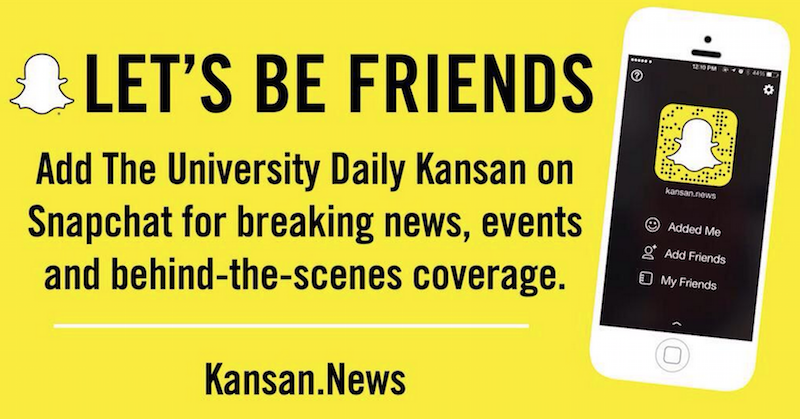
The digital product is the go-to place for news, information, sports, features and fun stuff for the University of Kansas community. Kansan.com will house breaking and spot news coverage, serious stuff (with appropriate packaging), goofy content and beat blogs. We want to inform, entertain and engage with our audience.
We need to vary our content format more. Why should we always write inverted pyramid news stories or news briefs? Why not write “quick hits” or “What you need to know from tonight’s Student Senate meeting?” Why don’t we produce videos, but also provide GIFs + a list below. (My goal is not to turn the Kansan into BuzzFeed. However we must reformat important stories in a way that connects with and appeals to our audience.) Some of this has been done at the Kansan, but it needs to happen more often, not once a week.
We will improve the way that online content is displayed. I will work with the summer editor to optimize the capabilities of Kansan.com. This includes making sure that we’re presenting content in a readable, appealing way. Finally, we will introduce a redesigned print product this fall.
Focus on recruiting and hiring
A major weakness of the Kansan is that its staff isn’t diverse. Most people on staff look the same, are friends with the same people, have the same major and come from the same socioeconomic background. This hurts the Kansan because important student voices are missing. Multicultural voices are missing. Voices from different majors are missing. I want to improve our recruiting process by reaching out to advisers in different colleges within the University, individual professors in the J-School, the Office of Multicultural Affairs and different student groups.
[inlinetweet prefix=”” tweeter=”” suffix=”says @katiekutsko”]I want to improve the quality of people and diversify the backgrounds of the Kansan’s staff[/inlinetweet]. And I want to start the day I’m hired. This specific goal is very important to me. The University, state and national climate today needs strong leadership and expects new voices. Issues like sexual assault, racism and discrimination are prominent. I want the Kansan to lead the conversations happening around campus. It all starts with who we hire and whose voices we’re hearing on a day-to-day basis.
The Kansan is supposed to be the student voice. This will help get students talking about the issues that matter to them.
Making our reporters and editors better
Everyone on staff should know how to submit KORA and FOIA requests, not just the ME.
We need to have professionals hold workshops and Skype conversations about different specialty areas. Why don’t we take a field trip to the KC Star one day to see how they work, and then the next week, they can come to us and teach us how to be better? Why don’t we Skype with a sports reporter who works at ESPN? Why don’t we have professors lead workshops on data visualization? Why don’t we learn about resources within social media for research and finding sources? I know this all sounds obvious, but we aren’t doing this and haven’t been for awhile. We have the connections. It’s foolish not to use them.
Let’s send people to conferences. Think-tank learning situations are a great thing.
Awards aren’t everything, but they give us tangible goals to strive toward. [inlinetweet prefix=”” tweeter=”” suffix=”says @katiekutsko”]Producing an Hearst-worthy piece is something each Kansan staff member should strive for.[/inlinetweet]
Our high-quality content pieces need a high-quality experience. We need to improve our digital packaging tremendously. We need to collaborate and strategize the best ways to do this in teams.
Align news and business efforts
Unlike years past, Addies and Newsies only tend to be rivals during the softball game. This has strengthened the organization. When the EIC and Business Manager align efforts, everyone is better. But we need to do a better job. We work well together when managers schedule meetings at the appropriate times during a project, or when we’re at the same place at the same time. Next semester, when both sides are in the office during the same times, we will align our efforts.
I’m going to hire someone who lives in the sweet spot between the advertising and editorial teams. We can do this through a new position called Brand Manager. Here’s where he/she will fit into the structure:
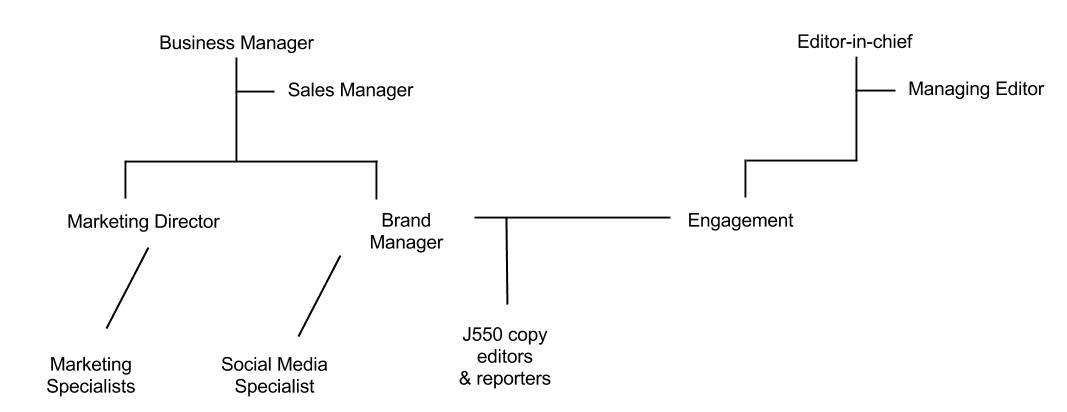
[Read the Brand Manager’s job description.]
The Business Manager and I also intend to widen the breadth of content distribution and make money from it. Those ideas aren’t quite ready for publication, yet.
Engage alumni
The University Daily Kansan is 110 years old. Why don’t we tap into the wealth of knowledge and support that our alumni could provide? I will create a “Kansan Alumni Association.” (The Daily Orange at Syracuse has one.)
My first step will be coordinating with the KU Alumni Center and the J-School to collect email addresses to gauge interest. I can only assume that alumni want to be more involved, especially now that we’re about to overhaul.
What I want to do by the start of the fall semester
- Build a website that we can link to on Kansan.com
- Within the website, produce a blog/newsletter that would be updated monthly this coming semester and then transition to twice per semester in future semesters. I’m thinking the EIC and BM could include their plans and then a wrap-up. We will also send this out through an email newsletter.
- Organize a donation page.
- Provide archives, organized by author, as far as we can go, so alumni can reconnect with their work. (This will need to be a summer project, and I will need help with this part.)
- Develop a mentorship program. On a volunteer basis, we could collect contact information from News and Addie graduates who want to be directly involved with students working at the Kansan now. I know that I would love to be able to connect with someone who has been in my shoes before and be able to call them for advice or networking purposes.
In-person promotion opportunities after launch:- Homecoming
- J-School Generations
- J-School alumni newsletter
At times, the past year has felt surreal. I often look back and reflect on the person I have become and am shocked by the growth I have made emotionally, professionally and academically. I started last January as a meek, intimidated sophomore who wasn’t sure she could do it; now I am an upcoming senior who knows that she can.
Working at the Kansan has been my favorite aspect of college — it’s why I study at the University of Kansas. I am incredibly passionate about the organization and want to see that it, and all of the other passionate student journalists, succeed. I know that it will not be a quick or an easy push, but I’m confident the team I am putting together will be up for the challenge.
Please email Katie Kutsko, the Fall 2015 Editor-in-Chief, at kkutsko@kansan.com with any feedback or questions.
- Adopting a digital-first mindset at the University Daily Kansan - April 28, 2015
